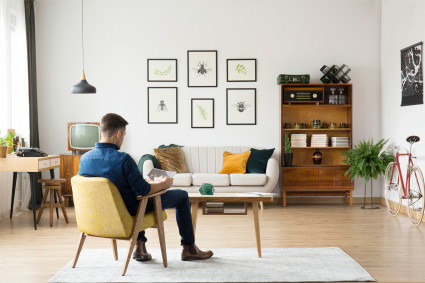Types of interior design
The 7 elements of interior design explained
If you understand the elements of interior design, you can craft any space to make it your own. Here are seven key elements to bear in mind as you build a cohesive space.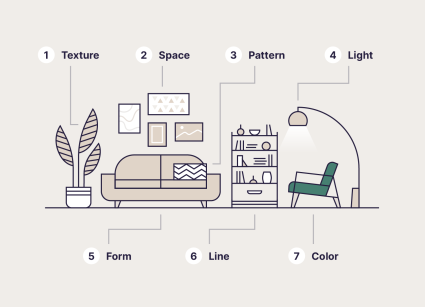
- Texture refers to how something feels. You can use texture in your design through textiles like rugs or wall hangings.
- Space refers to the layout of the objects in a room. Generally, you can aim for a 50/50 balance of furnishings and empty space to avoid clutter.
- Pattern refers to patterned materials like floral wallpaper as well as repeating elements among a room's objects.
- Light is controlled with tools such as drapery and lighting fixtures so you can properly illuminate your space.
- Form is the shape of a room or any objects in it. It can range from sharp geometric shapes to curved organic shapes.
- Line is an element that adds structure to a room. For example, an accent chair or a bookcase adds horizontal lines.
- Color is everywhere in a room. Most spaces stick to neutrals and use features such as an accent wall or statement furniture to add color to their interior.
5 trending interior design styles for 2024
With so many popular interior design styles to choose from, it might seem hard to know what’s on trend. But there are certainly some types of interior design that are having a moment. Here are the top trending styles we’re seeing in 2024.1. Bohemian
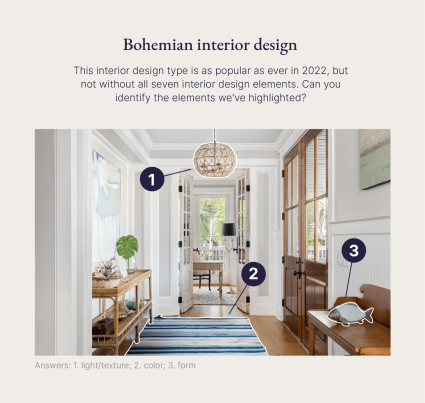
- Interior design origin: 19th-century France
- Interior design history: This interior style was started by French artists — also known as bohemians — who valued creativity over luxury.
- Key interior design elements: Texture, pattern
2. Maximalist

- Interior design origin: 2020s, international
- Interior design history: Pushing back against minimalism, maximalism gained traction on social media
- Key interior design elements: Pattern, texture, color, form
3. Cottage
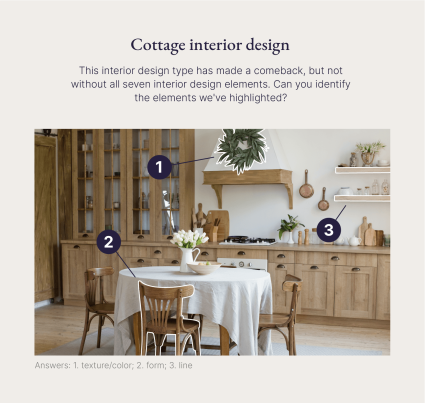
- Interior design origin: 18th-century Germany
- Interior design history: This style is very traditional and calls back to historic German farmland, appealing to anyone who wants a traditional-feeling space.
- Key interior design elements: Light, texture
4. Mid-Century Modern
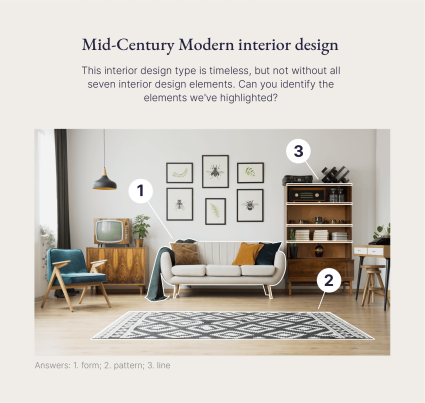
- Interior design origin: 1950s United States
- Interior design history: Although this style has been around since the 50s, Cara Greenberg was the first to name it Mid-Century Modern in her 1984 book, “Mid-Century Modern: Furniture of the 1950's.”
- Key interior design elements: Form, pattern, line
5. Organic
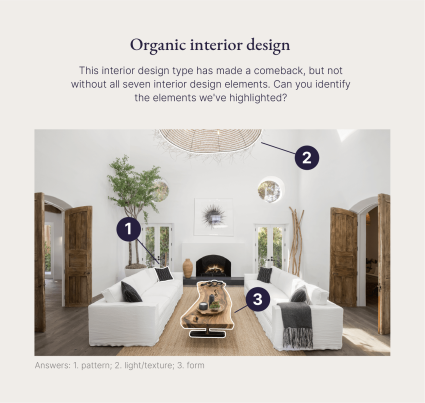
- Interior design origin: 1930s United States
- Interior design history: Organic design’s popularity is often credited to architect Frank Lloyd Wright, whose signature style integrated natural elements into his structures.
- Key interior design elements: Form, space, light, color
More types of interior design
Trends come and go, but finding an interior design style that suits your personal taste and stands the test of time is key to feeling comfortable in your space. Here are some other styles to consider in your home or second home.6. Coastal

- Interior design origin: Unknown
- Interior design history: Coastal design is one of the oldest interior design styles. Its origin is hard to pin down, as it’s developed from many sub-styles of worldwide coastal regions.
- Key interior design elements: Space, color, light
7. Art deco
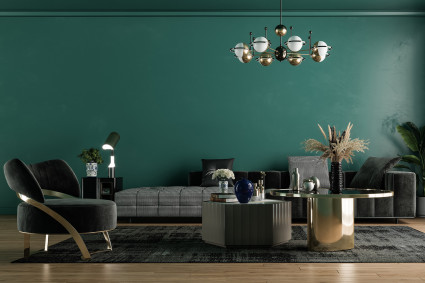
- Interior design origin: 1910s France
- Interior design history: Though art deco design reached its popularity peak in the United States in the 1930s, it originated in France a little earlier.
- Key Interior design elements: Pattern, line, color
8. Minimalist
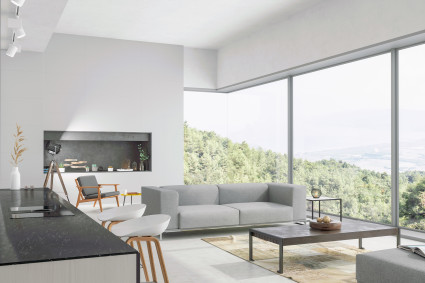
- Interior design origin: 1950s Germany and United States
- Interior design history: Many consider minimalism to have evolved from the utility of Bauhaus design but with pared-down decoration.
- Key interior design elements: Space, line, light
9. Modern
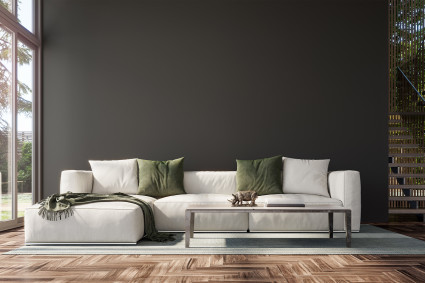
- Interior design origin: 1950s United States
- Interior design history: Modern design evolved at the same time as Mid-Century Modern but it takes inspiration from minimalism instead of art deco.
- Key interior design elements: Line, space, color
10. Traditional
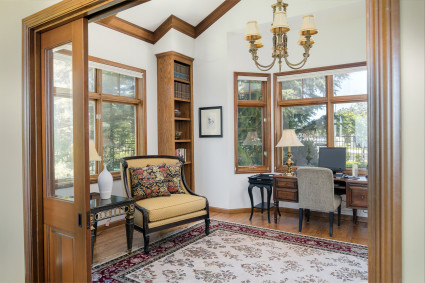
- Interior design origin: 18th-century England
- Interior design history: Traditional interiors descend from 18th-century home design and have clear influences from colonial design as well. This design style is highly stylized and showcases natural materials and craftsmanship.
- Key interior design elements: Texture, form
11. Transitional
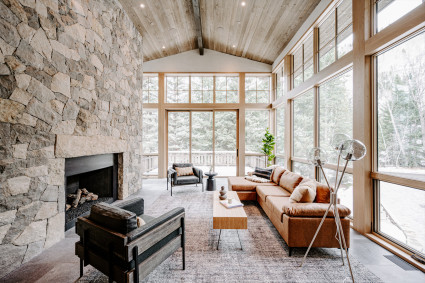
- Interior design origin: 1950s Germany and Scandinavia
- Interior design history: Transitional style developed around the same time as modern and Mid-Century Modern styles as another interpretation of the contemporary interior design style.
- Key interior design elements: Texture, line
12. French country
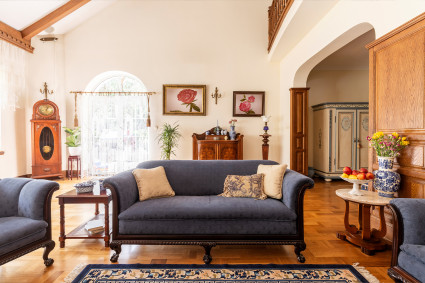
- Interior design origin: 18th-century France
- Interior design history: French country combines rococo and rustic styles to create an elegant interior style that still feels cozy.
- Key interior design elements: Color, texture
13. Scandinavian
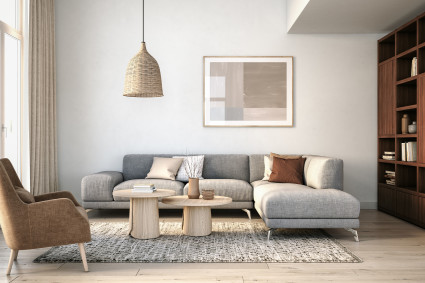
- Interior design origin: 1910s Denmark
- Interior design history: What’s now known as Scandinavian interior design was first featured in the 1914 Danish magazine titled “Skønvirke,” which translates to “graceful work.”
- Key interior design elements: Color, texture, line
14. Industrial
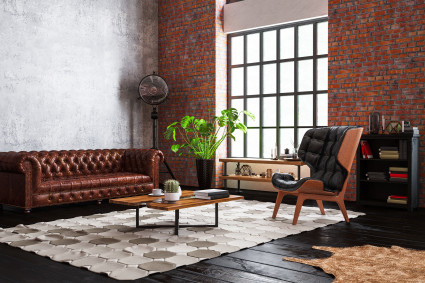
- Interior design origin: 1920s Germany
- Interior design history: Industrial interior design also has its roots in the Bauhaus movement, but it was solidified as its own style later in 1944 with the founding of the Society of Industrial Designers.
- Key interior design elements: Line, texture
15. Eclectic
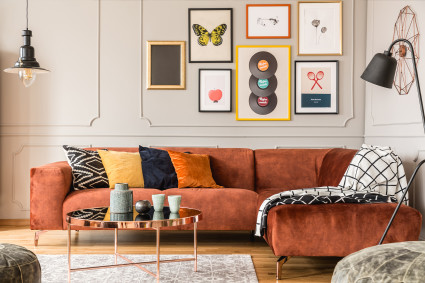
- Interior design origin: 19th-century France
- Interior design history: While eclectic design doesn't have a clear origin, it became popular at the end of the 19th century because of the widespread appeal of combining traditional interior design styles.
- Key interior design elements: Texture, pattern, color
16. Modern farmhouse
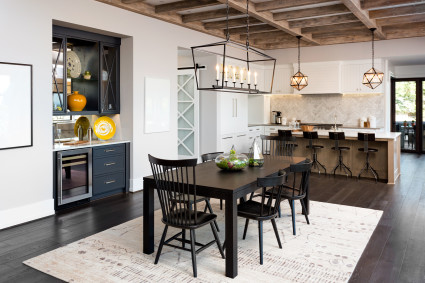
- Interior design origin: 2010s United States
- Interior design history: While versions of modern farmhouse style have been around since the 2000s, one of the first mentions of this style is from a 2016 New York Times article. After this was published, the modern farmhouse style shot to popularity and it remains popular today.
- Key interior design elements: Texture, form, line

